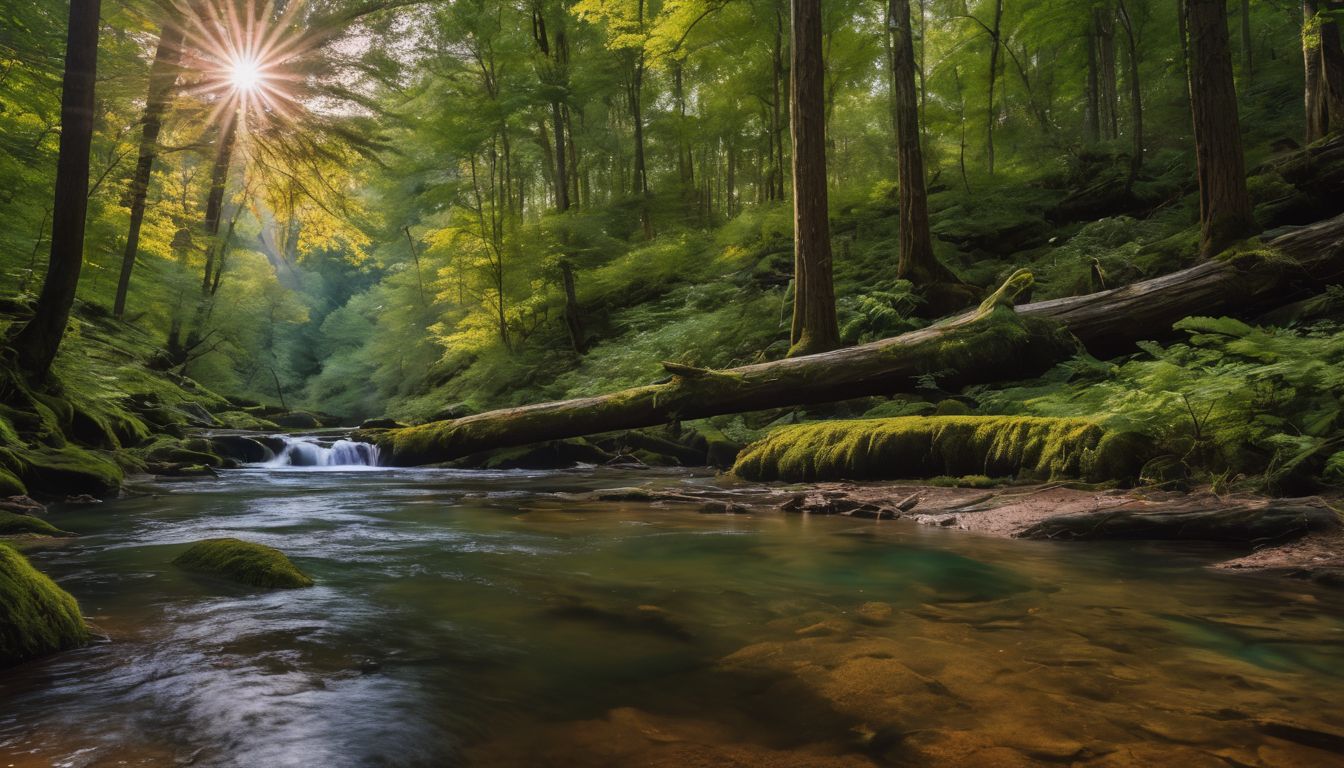Every Christmas, we use trees as decoration for only a few weeks out of the year. Two of the most popular options, farmed trees and artificial trees, have some harmful consequences for the environment. However, many eco-friendly alternatives exist, like living Christmas trees, which minimize these effects. Choosing alternatives to farmed and artificial trees have benefits for the environment, for your health, and for your wallet.
BENEFITS for the environment: Around 35 million farmed Christmas trees are cut down each year.2 These farmed trees also often have pesticides which runoff into the natural environment.3 Artificial trees, on the other hand, require a lot of gasoline to ship from the factory and are often made of very unsustainable materials. Using an alternative to both kinds of trees minimizes the damage done to the environment. For more information regarding the negative effects of pesticides on the environment, check out this .
BENEFITS for your health: Real trees are grown with the use of a great deal of pesticides, which has negative effects on the environment and your health. Artificial trees also contain various chemicals which can pose health risks.4 Many alternatives, on the other hand, allow you to control the amount of pesticides to which you will be exposed.
BENEFITS for your wallet: For the most part, eco-friendly alternatives to the most popular options are actually a little cheaper, since you get more value out of your tree when you don’t just use a tree for a couple of days in a year.
Cost: Low to High
Many of these options are really cheap, while others can be quite expensive. The cheapest option is actually free, since you can just decorate a tree that you may already have in your backyard.
Time and Effort: Low to High
This just depends on how much time and effort you are willing to put in. Some of these options take very little effort, while others can take a greater amount of effort. For example, using an artificial tree which you’ve already bought actually requires no added effort, since it would not be any change, while buying and planting a living Christmas tree takes a lot of effort and care.
Real vs. Artificial Trees: There is a huge debate within the environmental community about whether farmed trees or artificial trees are the more environmentally friendly option. Here are the relative benefits and drawbacks of each kind of tree.
| Farmed Trees | Artificial Trees | |
| Impact on Natural Habitats | Farmed trees can provide habitats to animals, oxygen to the atmosphere, and act as a carbon sink. Although you are cutting down a tree, you at least are planting a habitat for about 8 years before cutting it down again.6 | Using an artificial tree doesn’t require cutting down any trees nor direct disruption of any natural habitat.7 |
| Transportation | Real trees have to be transported from the farm to people’s homes every year, which can add up to a lot of gasoline usage, especially since real trees are generally so much heavier than artificial trees.8 | 85% of artificial trees are actually made in China, so when they get transported abroad, a huge amount of gasoline is used during transportation.9 |
| Hazardous chemicals | Many, many, many pesticides are used on these trees every year to ensure that they remain viable to sell to consumers. These can runoff into the environment both directly from the farm and after they have been recycled for mulch.10 | There are heavy metals in some fake trees and they are composed of petroleum-based products, like PVC.11 |
| Disposal | Because cut trees aren’t reusable, they are thrown out every year. However, around 93% of consumers who buy a real Christmas tree recycle theirs through a community program, which processes the trees and puts them to use in the natural environment.12 | These can take hundreds of years to decompose in a landfill.13 |
Eco-friendly Christmas Tree Alternatives: These eco-friendly alternatives reduce the environmental impact of Christmas trees.
- If you already have an artificial tree, re-use it: If you already have an artificial tree, you should use it. The resources in question have already been expended, and the best thing that you could do for the environment is to re-use what you already have.14
- Buy a living Christmas tree: Keeping a real tree alive is one of the most environmentally friendly ways to keep the tradition, but doing so after it has been indoors takes a lot of work:
- Condition the tree beforehand: Place the tree in an unheated room like the garage, so that the tree can adjust to living outside its roots. When you bring it indoors, try to keep it away from heat sources and out of direct sunlight.
- Moisten the root ball when you move the tree indoors: Before moving indoors, be sure to keep the root ball in a moist condition. To prevent moisture from getting on your floors, place the root ball in a bucket or a large pan.
- Keep it inside for no more than 10 days: If a tree gets too used to high indoor temperatures, it will start to grow and break buds as if it were already spring, which would make it unsuitable for planting again outside in the cold winter.
- Re-use or replant the tree: In order to be able to use the same Christmas tree for next year, you can either keep it in a pot or replant it in your backyard in the same way you’d plant any tree.15
- Condition the tree beforehand: Place the tree in an unheated room like the garage, so that the tree can adjust to living outside its roots. When you bring it indoors, try to keep it away from heat sources and out of direct sunlight.
https://web.archive.org/web/20160404040749if_/http://www.youtube.com/embed/jV9XQZfk59Y 16
- Buy from an organic tree farm: One of the biggest drawbacks to real Christmas trees is that they are usually treated with a lot of pesticides, which contributes to the pollution of local watersheds. If you buy from an organic tree farm, you can eliminate the pesticides, while still being able to buy a “traditional” cut Christmas tree. Some resources for locating organic Christmas trees:
- greenpromise.com/resources/organic-christmas-trees
- localharvest.org/store/wreaths (mainly organic wreaths, but also some organic tree farms may be found here).
- greenpromise.com/resources/organic-christmas-trees
- Rent a living Christmas tree: If you like the idea of keeping Christmas trees alive but don’t like the idea of having to maintain it for the other 11 months of the year, consider renting a living Christmas tree. One such company which lends out living Christmas trees is The Original Living Christmas Tree Company, which serves the area around Portland, Oregon. After New Years’, these trees are picked up and delivered to parks, schools, and other groups which have arranged to have the trees planted.17
- Decorate your own tree outdoors: If you don’t like the idea of carrying large trees in and out of your house, consider just planting a Christmas tree outdoors and decorating it there. You can benefit the wildlife even more by decorating the tree with food such as cranberries and popcorn.18




